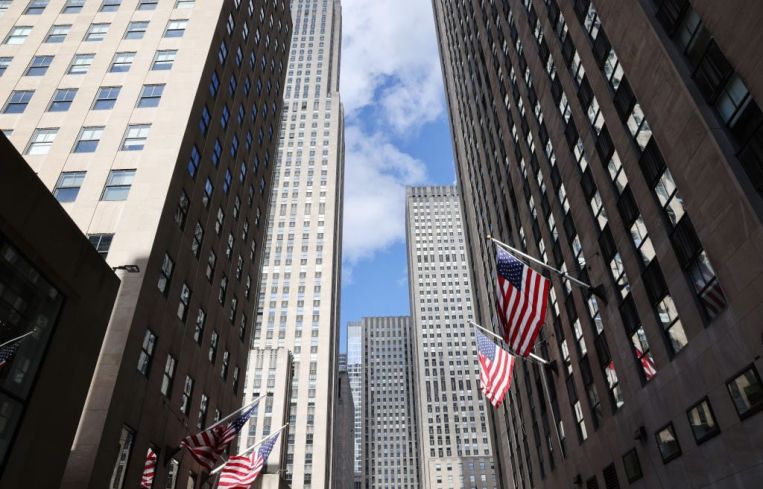Value of NYC Office Buildings Drops by $29B During Pandemic
A new report from the state comptroller says the city’s office market won’t recover until 2025
By Celia Young October 8, 2021 2:10 pm
reprints
The pandemic’s impact on New York City’s office market might be worse than anyone thought.
The coronavirus erased years of growth in the city’s office sector, and, along with it, $28.6 billion in market value and more than $850 million in property taxes in the city’s 2022 fiscal year, according to a report from New York State Comptroller Thomas DiNapoli.
A $28.6 billion drop represents a 16.6 percent decline from the full market value of New York City office buildings in the 2021 fiscal year, the first dip in total office property market values in 20 years. The city’s fiscal year runs from April 1 to March 31, according to the city’s Department of Buildings.
“When the pandemic hit, companies shifted office workers to remote work, rents fell and vacancies rose,” DiNapoli said in a statement. “I am optimistic for the sector’s recovery, but its short-term future remains uncertain as employers assess future use of the space. The city should closely monitor trends in the sector and consider the future impact on tax revenues.”
The comptroller’s office doesn’t expect real estate values for office buildings to return until 2025, and uncertainty surrounds any potential recovery, Rahul Jain, the state’s deputy comptroller for New York City, told Commercial Observer.
“The one thing I definitely am sure of is I don’t know what COVID-19 holds for us next,” Jain said.
The impact of the pandemic might still be a few years away from being fully realized, Jonathan Miller, president of real estate appraiser and consultant firm Miller Samuel, told CO. Companies that still have five or 10 years left on their leases might move to higher-class office space or downsize, shifting towards remote work.
“We weren’t going to ever return to the pre-pandemic relationship workers had with the office,” Miller said. “This past summer several Wall Street firms came out … and said something to the effect of, ‘if you’re not willing to come in every day and work long hours, you’re in the wrong industry.’
The thing is that workers have had a long time to become used to working remotely, or at least partially remotely, so I don’t think those firms are going to be successful,” Miller added.
Because of that shift to remote work, Miller expects the cost of office space to trend lower in the next few years, and retail shops in office-dependent areas to suffer as well. The Real Estate Board of New York (REBNY) had also blamed lower office occupancy for the 30 percent of storefronts that were vacant around Grand Central Terminal and the rest of Midtown East as of the summer — double the two corridors’ historical rate of 10 to 15 percent.
The office market is a huge driver of the city’s economy, causing both retail and city tax coffers to suffer, said Jain. Commercial real estate tax collections totaled $71 billion in the 2021 fiscal year. The comptroller’s office expects property tax collections, which are calculated based on the assessment and market value of the city’s real estate, to decline 5.4 percent, to $1.7 billion, in the 2022 fiscal year.
The office sector’s impact on tax revenue is outsized because it represents much of the city’s property taxes, with it pulling in an estimated $6.9 billion in direct revenue in the 2021 fiscal year through property, real estate deal, mortgage and commercial rent taxes.
Office sector property taxes raise more money for the city than any other type of asset class, and amount to more money than the entire budgets of New York City’s Department of Sanitation, Fire Department, Department of Transportation and Department of Parks and Recreation combined.
The city also collects money from the sale of commercial properties, which saw similar drops due to the pandemic. Total dollar volume of office property sales for the 2021 fiscal year dropped to its lowest level since 2010, when the market was still feeling the lingering effects of the financial crisis.
Federal dollars should help to make up for the dip in tax revenue — at least through the next two to three years, Jain said. But after that assistance runs out, the city could be forced to reassess education spending and some social and health services. The latter will, hopefully, be less necessary in a few years after the city recovers from the pandemic, Jain said.
The drop in property values is significant for the nation as a whole, because New York City alone holds 11 percent of all of the office space in the United States, at 463 million square feet, as of the second quarter of this year. The comptroller’s report paints a rosy picture for that office market before the pandemic, when the office sector hit historic highs with 1.6 million jobs in 2019.
“Midtown and the Financial District are two of the largest business districts in the world,” DiNapoli said in a statement. “Demand for space led citywide office sector property values to more than double in the decade before the pandemic.”
That demand sharply dropped after office employment fell 5.7 percent in 2020, along with total employment, which fell 11.1 percent. Workers shifted to home offices and asking rents began to trend downwards while office vacancy rates hit 18.3 percent in the second quarter of 2021, the highest the city has recorded in three decades, according to the comptroller’s report.
Celia Young can be reached at cyoung@commercialobserver.com.


